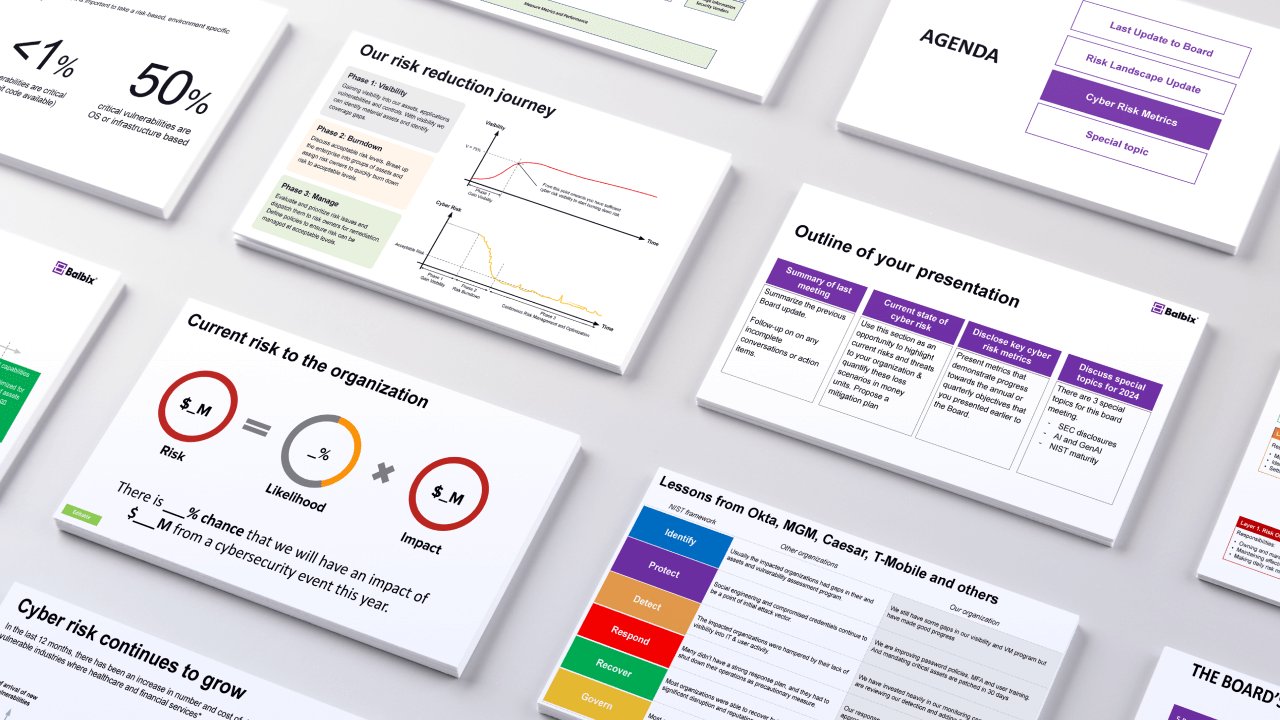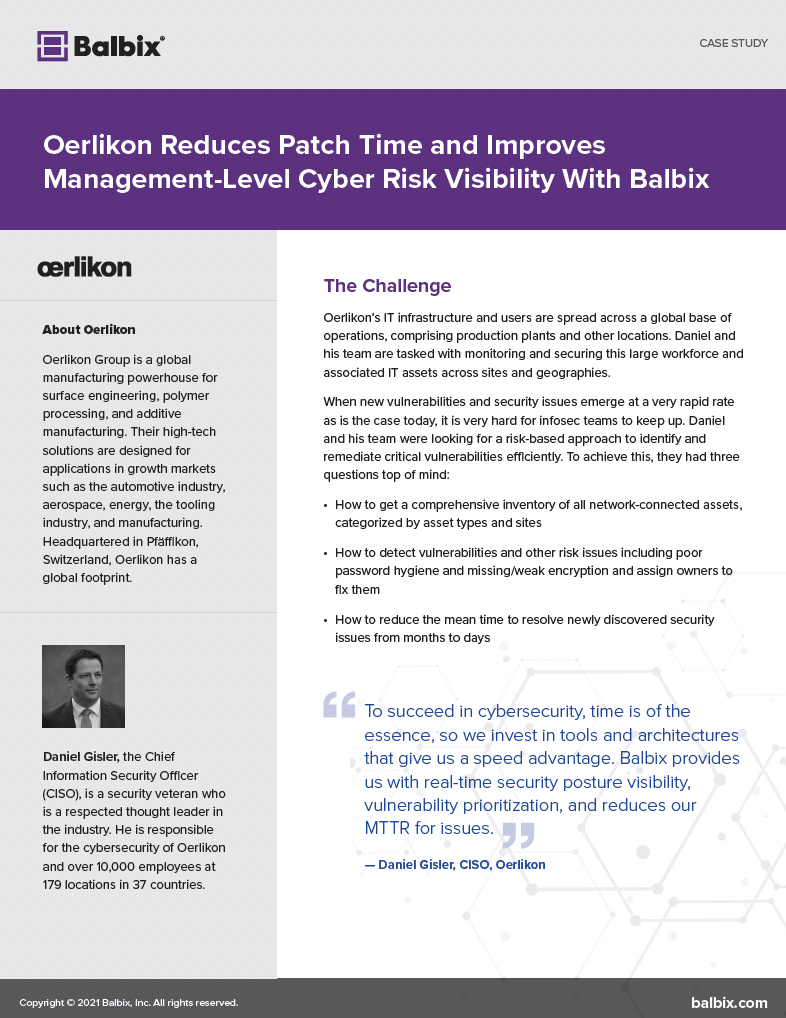In 2025, organizations face increasing risks from ransomware attacks, zero-day vulnerabilities, and other advanced cyber threats. At the same time, compliance with regulations like PCI DSS, GDPR, and SEC mandates regarding vulnerabilities is much more scrutinized now than in the past. The need for robust cybersecurity solutions to address these challenges has never been greater.
This is where vulnerability management tools come in. These essential cybersecurity tools help IT leaders, security teams, and compliance professionals detect, prioritize, fix, and track the remediation of vulnerabilities and exposures before they turn into costly breaches. But with so many vulnerability management solutions available, how do you find the best one for your business?
In this guide, we’ll explore the best vulnerability management tools for 2025. We’ll break down their key features, pros, cons, and ideal use cases to help you make an informed decision.
Why Vulnerability Management is Critical in 2025
Rising Threats and Complexity
- Rise in Sophisticated Cyber Threats: Cyberattacks like ransomware, exploits of cloud misconfigurations, and zero-day vulnerabilities continue to rise, targeting businesses of all sizes. These advanced threats exploit system vulnerabilities and evolve to bypass traditional cybersecurity defenses, leading to costly disruptions, data loss, and financial damages.
- Challenges of Securing Hybrid Environments: As companies shift toward hybrid computing environments—combining on-premises, hosted, and multi-cloud infrastructures along with cloud apps (SaaS) and Artificial Intelligence (AI) tools—managing cybersecurity becomes increasingly complex. Each environment requires tailored tools, strict security policies, and 24/7 monitoring to protect endpoints and prevent data breaches.
Compliance Pressure
Regulations are tightening globally, from GDPR in Europe to stricter SEC guidelines in the U.S., and businesses are under increasing pressure to adapt. Compliance is no longer just a legal obligation—it’s a key factor in building credibility, enabling partnerships, and maintaining customer trust.
Non-compliance can lead to hefty penalties, reputational damage, and a loss of stakeholder confidence. Companies must prioritize staying up-to-date on evolving regulations & frameworks while implementing robust compliance strategies to remain competitive and trusted in today’s market.
How to Choose the Best Vulnerability Management Tool
Here’s what to look for when evaluating tools:
Core Features
- Comprehensive Asset Discovery: A critical step in vulnerability management is ensuring assets, including endpoints, servers, devices, and other network components, are identified and accounted for. —A critical step in vulnerability management is ensuring that. Building a complete inventory of your IT environment helps eliminate blind spots and ensures no critical assets are overlooked, which could create security vulnerabilities.
- Real-Time Vulnerability Scanning: Protect your systems from cyber threats with real-time vulnerability scanning. Choose a tool that continuously monitors your network for new vulnerabilities, allowing you to detect and address security issues as they arise.
Read more about the best vulnerability scanning tools in our comprehensive breakdown.
- Risk-Based Vulnerability Prioritization: Not all vulnerabilities are equal. Focus on addressing the vulnerabilities that pose the greatest risk to your business. Look for tools prioritizing threats based on key factors like exploitability, criticality, and potential business impact.
- Seamless Integration with Existing Tools: Maximize efficiency by selecting a vulnerability management tool that integrates with your IT stack. Ensure compatibility with Security Information and Event Management (SIEM) platforms, ticketing systems, patch management, and other workflows.
Business Considerations
- Scalability for Growing Businesses: Does the cybersecurity tool scale effectively to meet your business’s changing needs? As your organization evolves & grows, especially with hybrid and multi-cloud environments, ensure the tool can handle increased demands without sacrificing performance, security, or efficiency.
- Cost-Effective Cybersecurity Solutions: Is the tool budget-friendly while still offering a strong return on investment (ROI)? Find affordable cybersecurity solutions that provide powerful features and long-term value and align with your financial and security goals.
- Reliable Vendor Support and Updates: Does the provider offer regular updates to combat new cybersecurity threats and improve functionality? Check if the customer support team is responsive, knowledgeable, and able to resolve issues quickly to reduce downtime and maintain business continuity.
Compliance Assurance
Using the right tools, streamline your audit readiness and ensure compliance with industry standards like CIS, HIPAA, and ISO 27001. Compliance management tools simplify the process, helping you stay organized, reduce manual work, and maintain strong security practices. Meet regulatory requirements effortlessly while improving efficiency and safeguarding your data.
Top Vulnerability Management Tools in 2025

Balbix
- Key Features: Balbix offers AI-driven asset visibility and risk quantification to effectively identify and manage threats, real-time tracking across business systems for enhanced visibility, and automated compliance reporting to ensure accuracy and save time.
- Strengths: The platform provides clear, actionable insights, simplifies decision-making processes, and is well-suited for managing hybrid environments.
- Considerations: New users may experience a small and short learning curve with the AI-powered tools.
- Ideal For: Enterprises seeking proactive exposure and risk management and streamlined compliance solutions.
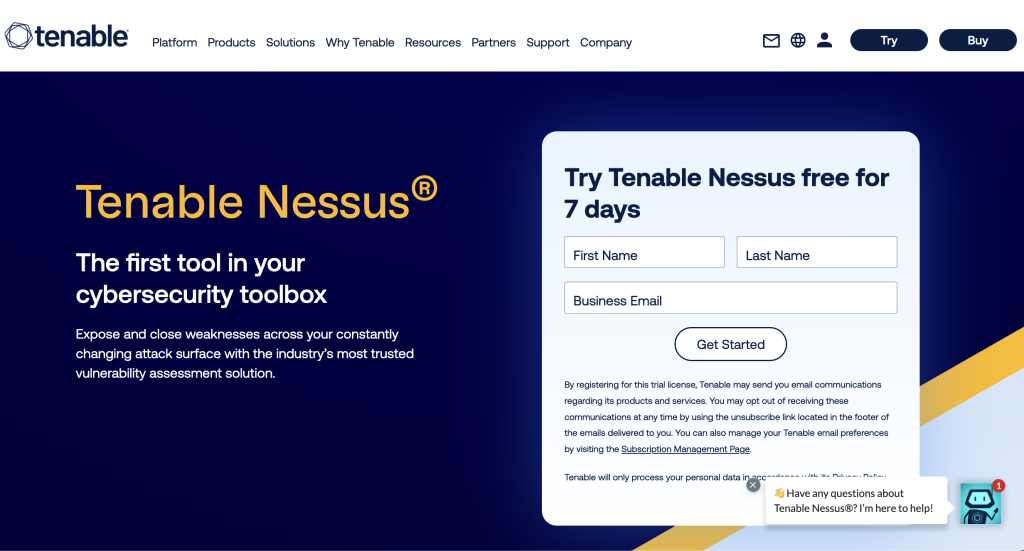
Tenable Nessus
- Key Features: Nessus automatically scans for security vulnerabilities and includes pre-built compliance templates to facilitate faster and easier audits.
- Strengths: It provides highly detailed vulnerability data, supporting thorough security analysis.
- Considerations: The tool can generate extensive data sets that may require experienced analysts for effective interpretation.
- Ideal For: Organizations with diverse IT infrastructures aiming to enhance cybersecurity and streamline compliance processes.
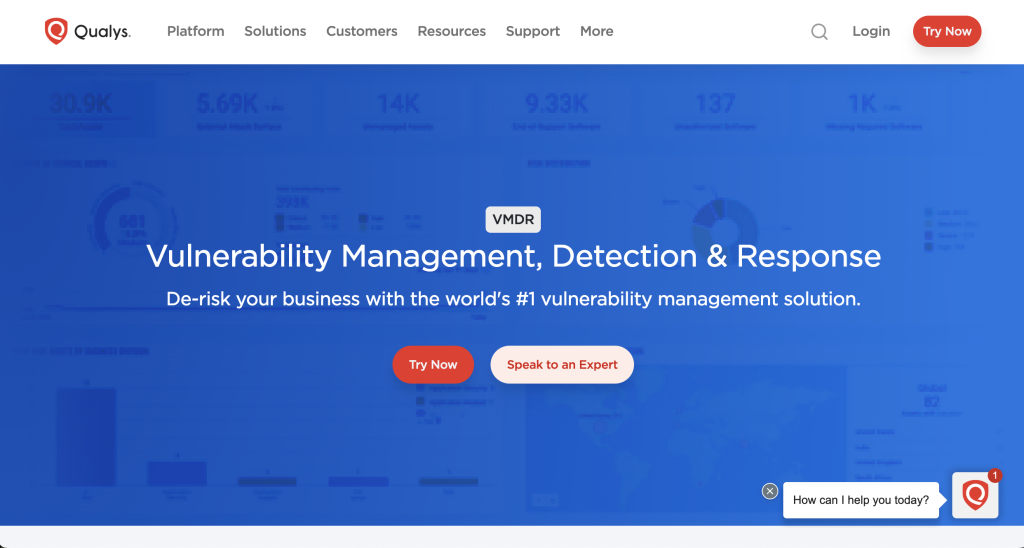
Qualys VMDR
- Key Features: Qualys VMDR offers comprehensive vulnerability detection, management, and response in a unified platform, with AI-powered risk prioritization to focus on the most critical threats.
- Strengths: It is a highly scalable, cloud-based solution with automated workflows designed for efficiency.
- Considerations: Reporting features may be challenging for non-technical users to interpret.
- Ideal For: Large enterprises looking to enhance cybersecurity with an integrated and automated approach.
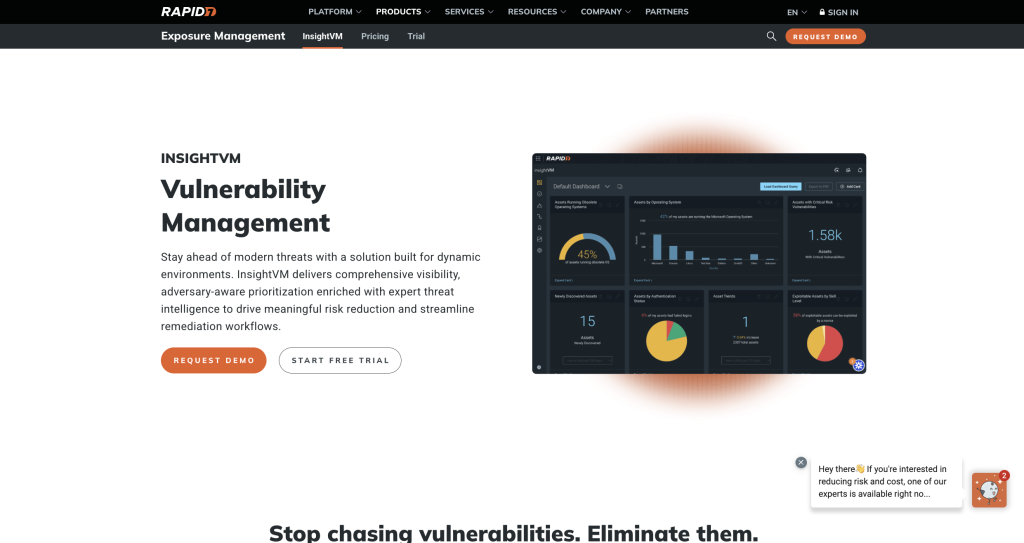
Rapid7 InsightVM
- Key Features: InsightVM includes a risk-based scoring system to identify and prioritize critical issues and dynamic, real-time dashboards for improved visibility and decision-making.
- Strengths: It offers detailed and comprehensive reporting that supports compliance and strategic planning.
- Considerations: Additional costs may apply for full integration with existing systems.
- Ideal For: IT teams or organizations managing complex and diverse infrastructures seeking enhanced risk management and reporting tools.
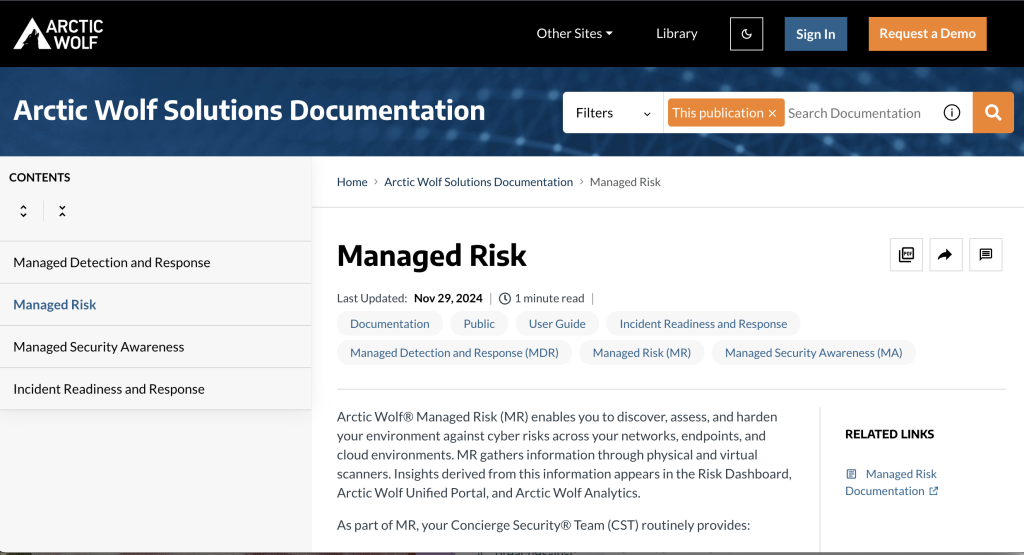
Arctic Wolf Managed Risk
- Key Features: This solution provides concierge-led support with dedicated, hands-on assistance and step-by-step guided remediation strategies to address security issues effectively.
- Strengths: Provides a turn-key solution to vulnerability management with no increase in headcount
- Considerations: Managed Detection and Response (MDR) solutions were originally designed for small to medium-sized businesses (SMBs) or teams with limited in-house cybersecurity expertise. They may not be the best fit for scaling within large enterprises.
- Ideal For: SMBs seeking expert guidance to manage vulnerabilities and strengthen their cybersecurity posture.
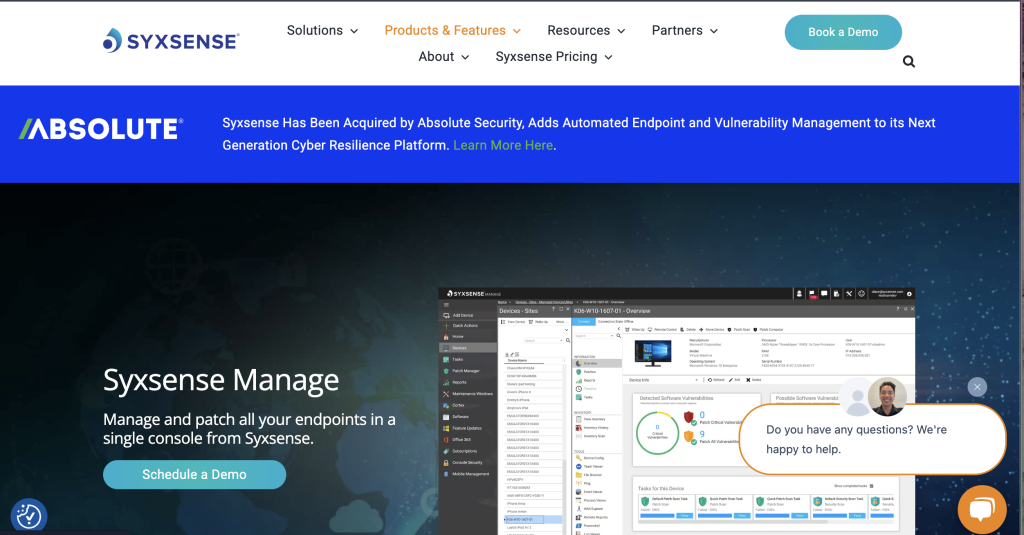
Syxsense Manage
- Key Features: Syxsense Manage includes automated endpoint remediation for quick vulnerability fixes and risk prioritization to first address the most critical threats.
- Strengths: It features an easy-to-use interface, making it ideal for non-technical teams or small IT departments.
- Considerations: The tool has limited functionality for large enterprises with complex needs.
- Ideal For: Mid-sized businesses seeking a simple and efficient endpoint management tool.
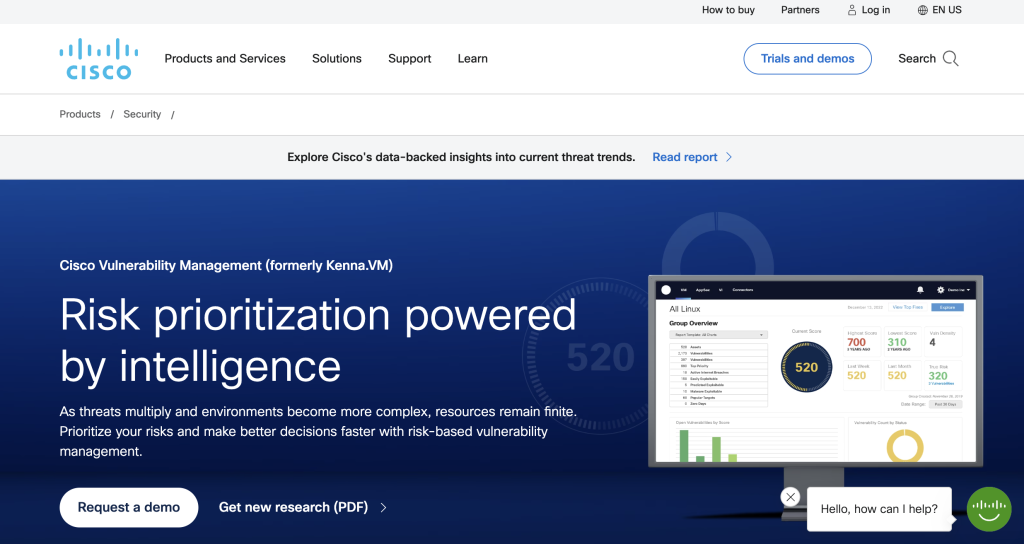
Cisco Vulnerability Management
- Key Features: Cisco’s solution offers predictive analytics powered by Cisco Talos, enabling organizations to identify and prevent cyber threats.
- Strengths: It seamlessly integrates with existing Cisco systems, maximizing value for customers already using the Cisco ecosystem.
- Considerations: Users may experience a steeper learning curve when unfamiliar with Cisco’s software tools.
- Ideal For: Organizations deeply integrated into Cisco infrastructure looking for advanced vulnerability management.
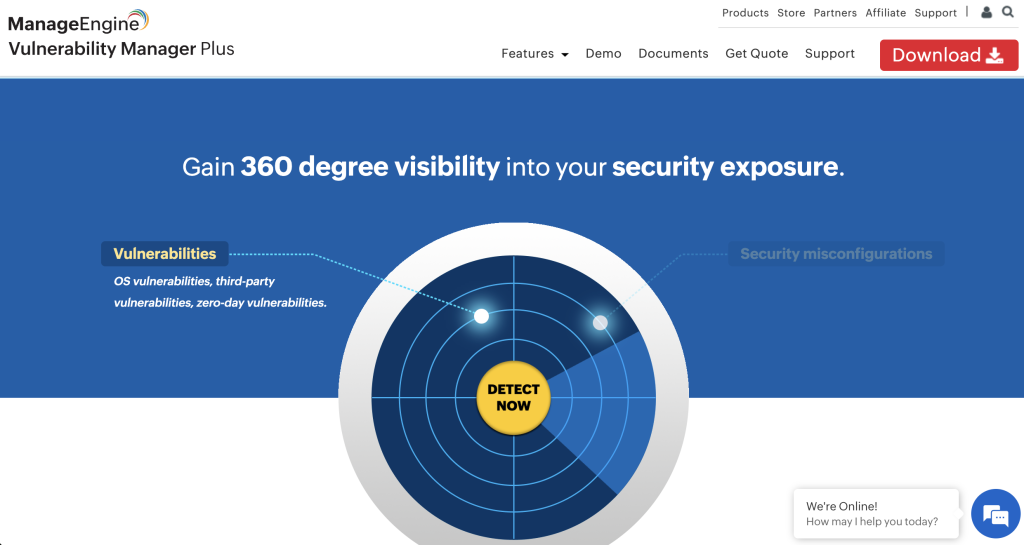
ManageEngine Vulnerability Manager Plus
- Key Features: ManageEngine provides comprehensive lifecycle management, from threat discovery to remediation. It allows users to discover threats, apply patches, and remediate issues.
- Strengths: This tool is well-suited for endpoint-heavy infrastructures, making it a strong choice for IT teams managing numerous devices.
- Considerations: Advanced features may require additional training to utilize fully.
- Ideal For: IT-focused organizations or businesses with complex infrastructure needs.
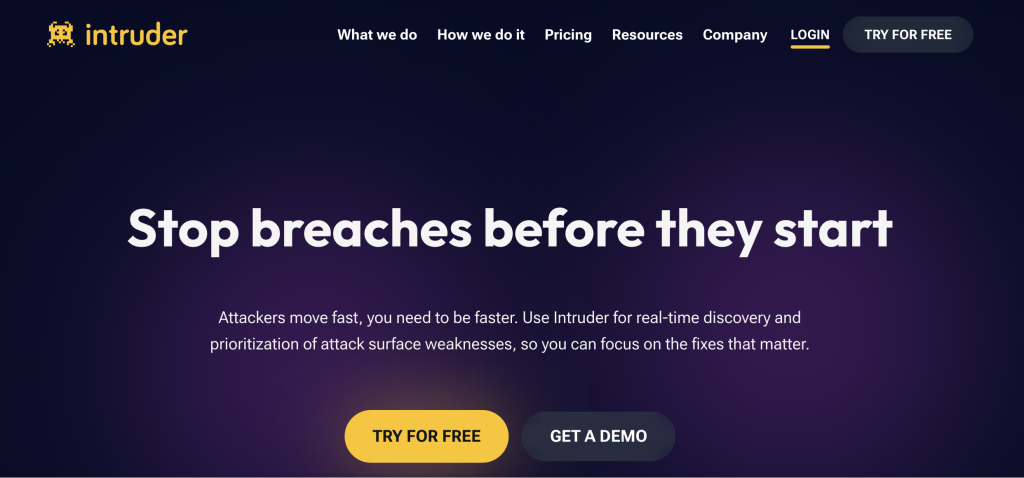
Intruder
- Key Features: Intruder is a simple, cost-effective vulnerability scanning tool designed to facilitate addressing critical threats through automated risk prioritization.
- Strengths: It features an easy-to-use interface and straightforward scanning, making it quick and affordable to set up.
- Considerations: The tool has limited scalability for larger organizations with more complex environments.
- Ideal For: Small and medium-sized businesses (SMBs) seeking effective vulnerability management solutions.
Future Trends in Vulnerability Management
- AI and Machine Learning in Risk Management: AI and machine learning are transforming risk management by improving risk prioritization and speeding up threat remediation. These advanced technologies analyze vast amounts of data in real-time, helping businesses identify vulnerabilities with precision and respond to security threats proactively.
- The Growing Importance of Cloud Adoption: Cloud adoption continues to rise as companies embrace cloud services’ flexibility, scalability, and cost-effectiveness. SaaS solutions lead the charge, offering simplified operations, reduced costs, and seamless team collaboration, making them an essential tool for modern businesses.
- Automated Auditing for Compliance: Automated audit tools are becoming critical for businesses to meet evolving compliance standards. By streamlining audit processes, reducing human error, and ensuring regulatory requirements are consistently met, automation helps organizations stay ahead in a constantly changing compliance landscape.
These trends highlight how AI, cloud computing, and automation are shaping the future of business operations. Stay ahead by adopting these innovative solutions today!
Final Thoughts
Investing in the right vulnerability management tool is essential for securing your organization, ensuring compliance, and staying ahead of emerging risks. Prioritize integration, scalability, and ROI when choosing the perfect solution for your business.
Frequently Asked Questions
- What are vulnerability management tools, and why are they important?
-
Vulnerability management tools help organizations identify, prioritize, and remediate security vulnerabilities before they can be exploited. They are essential for reducing cyber risk, preventing data breaches, and ensuring compliance with security regulations.
- How do vulnerability management tools work?
-
These tools scan IT environments for security weaknesses, assess their severity, and provide actionable insights to fix them. Many solutions integrate with security frameworks, automate patching, and support compliance reporting.
- What are the key features to look for in a vulnerability management tool?
-
Look for features like real-time vulnerability scanning, risk-based prioritization, automated remediation, asset discovery, and integration with SIEM and IT management systems.
- Which are the best vulnerability management tools for 2025?
-
Some top vulnerability management tools in 2025 include Balbix, Tenable Nessus, Qualys VMDR, Rapid7 InsightVM, and Cisco Vulnerability Management, each offering unique strengths for different business needs.
- How do vulnerability management tools help with compliance?
-
These tools streamline compliance by automating vulnerability assessments, generating audit-ready reports, and ensuring adherence to standards like PCI DSS, GDPR, HIPAA, and SEC cybersecurity mandates.

